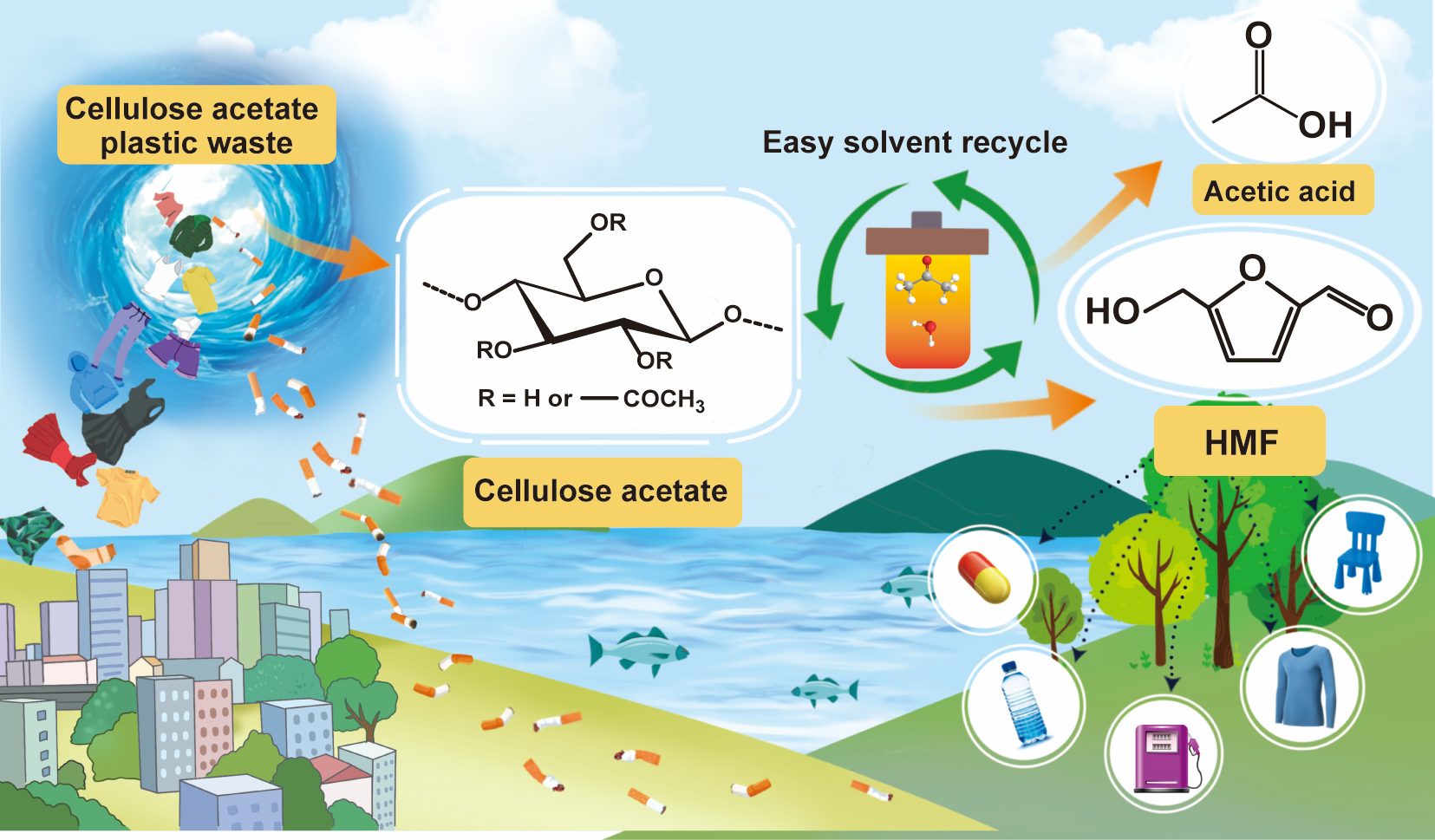木质素合成苯甲腈BDE-Driven Sustainable Synthesis of Lignin-derived Hydroxybenzonitriles via Tandem Green Cyanation and Gas-phase Hydrodeoxygenation
星期二, 30 9 月, 2025BDE-Driven Sustainable Synthesis of Lignin-derived Hydroxybenzonitriles via Tandem Green Cyanation and Gas-phase Hydrodeoxygenation
Recently, PhD student Ge-liang Xie supervised by Dr. Lujiang Xu and Profs. Zhen Fang published a research paper on the sustainable synthesis of hydroxybenzonitrile from lignin-derived vanillin in the international academic journal ACS Sustainable Chemistry & Engineering.
Achieving high-value utilization of lignin through catalytic upgrading to produce nitrogen-containing aromatic compounds represents a key route for sustainable chemical production. Among these compounds, hydroxybenzonitriles (HBNs) are important fine chemicals widely used in pesticides, pharmaceuticals, dyes, and materials. Currently, they are primarily synthesized industrially via fossil fuel refining processes, which involve multiple steps, complex operations, and are unsustainable. Therefore, developing a method to synthesize HBNs from inexpensive and renewable raw materials is crucial.
Vanillin is the most industrially produced aromatic compound derived from the oxidative depolymerization of lignin. Studies using bond dissociation energy (BDE) analysis have determined that the cyano functional group can be selectively retained during the synthesis of hydroxybenzonitrile from vanillin (C≡N: 136.21 kcal/mol vs. C-O: 62.44–116.17 kcal/mol). Thus, HBNs can be sustainably prepared through a two-step process involving vanillin nitrilation and vapor-phase hydrodeoxygenation (HDO).
In the first step, vanillin was converted to vanillonitrile under a green H2O/HCOOH system and mild conditions (85 °C, 12 hours), achieving a high yield of 99.2 mol%—superior to that obtained using the traditional DMF system. In the second step, during the continuous vapor-phase HDO of vanillonitrile, a modified Mo/TiO2 catalyst with triple functionalities (oxygen vacancies, appropriate Mo5⁺ content, and strong metal–support interactions) achieved a 57.6% HBN yield, outperforming Mo/ZrO2. Owing to the enhanced metal–support interactions, this catalyst retained 90% of its initial activity after eight cycles. This study establishes a sustainable route for converting lignin into chemicals and advances the development of catalyst design principles for biomass upgrading.Publication:
GL Xie, Y Cao, SR Li, QQ Lu, W Chen, S Gao, W Qiu, C He, Z Fang, LJ Xu, BDE-Driven Sustainable Synthesis of Lignin-Derived Hydroxybenzonitriles via Tandem Green Cyanation and Gas-Phase Hydrodeoxygenation. ACS Sustainable Chemistry & Engineering 2025, 13 (32), 13030-13041. https://pubs.acs.org/doi/10.1021/acssuschemeng.5c04554
基于BDE的木质素衍生羟基苯甲腈的可持续合成:通过串联绿色氰化和气相加氢脱氧
最近,博士生谢葛亮在徐禄江副教授和方真教授的指导下,在国际学术期刊ACS Sustainable Chemistry & Engineering (Q1; Impact factor: 7.3)上发表了一篇关于木质素衍生物香草醛可持续合成羟基苯甲腈的研究性论文。

Synthesis of Lignin-derived Hydroxybenzonitriles via Tandem Green Cyanation and Gas-phase Hydrodeoxygenation木质素基香草醛串联腈化与气相加氢脱氧合成羟基苯甲腈
通过催化升级木质素生成含氮芳香化合物的途径,实现木质素的高值化利用,是可持续化学品生产的关键途径。其中,羟基苯甲腈(HBNs)是广泛应用于农药、医药、染料和材料等的重要精细化学品,目前工业上主要通过化石冶炼合成,该过程步骤多、操作复杂且不可持续。因此,开发一种使用廉价且可再生原料合成HBNs的方法至关重要。
香草醛是目前通过木质素的氧化解聚在工业规模上生产最多的芳香族化合物,研究通过键解离能(BDE)分析确定了香草醛到羟基苯甲腈的合成过程中氰基官能团可以被选择性保留(C≡N: 136.21 kcal/mol vs C-O: 62.44-116.17 kcal/mol),因此通过香草醛的腈化和气相加氢脱氧(HDO)两步实现羟基苯甲腈的可持续制备。
在第一步香草醛合成香草腈的实验中,研究在绿色的H2O/HCOOH体系和温和条件下(85°C,12小时)获得了高产率香草腈(99.2 mol%),优于传统的DMF体系方法。在第二步香草腈的连续气相HDO中,经过改造的Mo/TiO2催化剂具有三重功能(氧空位、适量的Mo5⁺、强金属-载体相互作用),实现了57.6%的HBN产率,性能优于Mo/ZrO2。由于增强的金属-载体相互作用,该催化剂在8个循环后仍保持90%的初始活性。本研究建立了可持续的木质素转化为化学品的路线,推动了生物质催化剂设计原则的发展。
详情可见:
GL Xie, Y Cao, SR Li, QQ Lu, W Chen, S Gao, W Qiu, C He, Z Fang, LJ Xu, BDE-Driven Sustainable Synthesis of Lignin-Derived Hydroxybenzonitriles via Tandem Green Cyanation and Gas-Phase Hydrodeoxygenation. ACS Sustainable Chemistry & Engineering 2025, 13 (32), 13030-13041. https://pubs.acs.org/doi/10.1021/acssuschemeng.5c04554